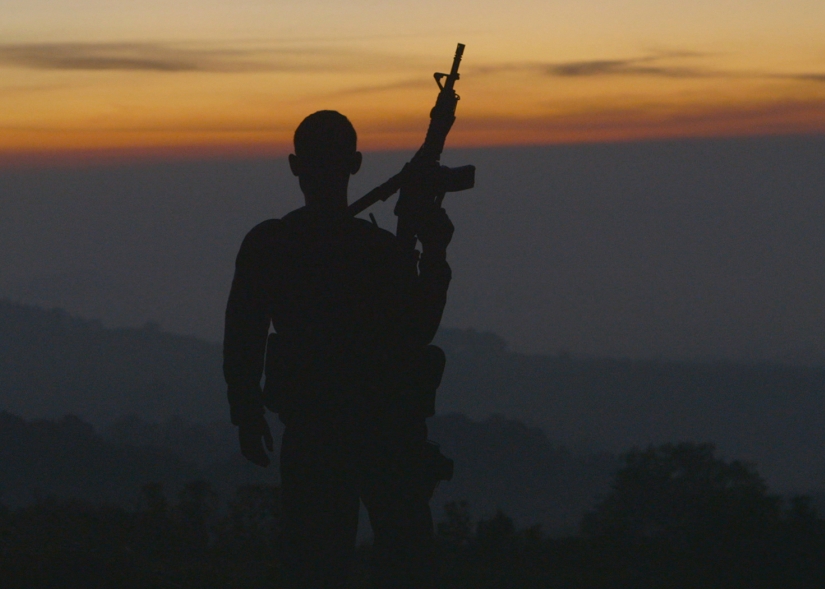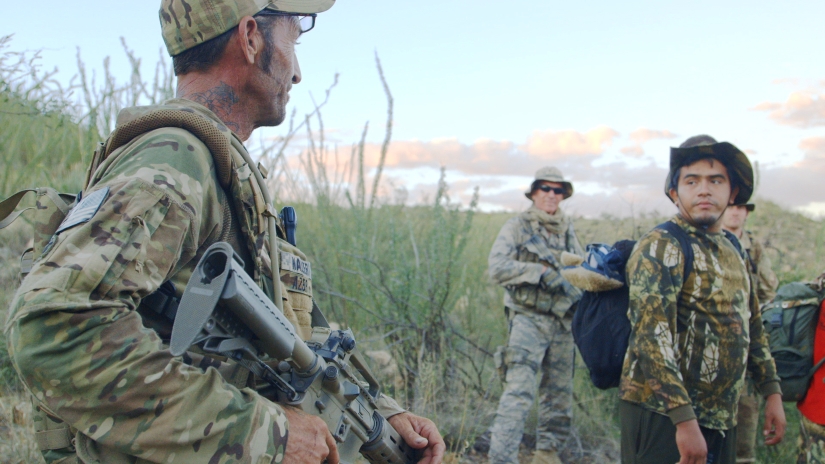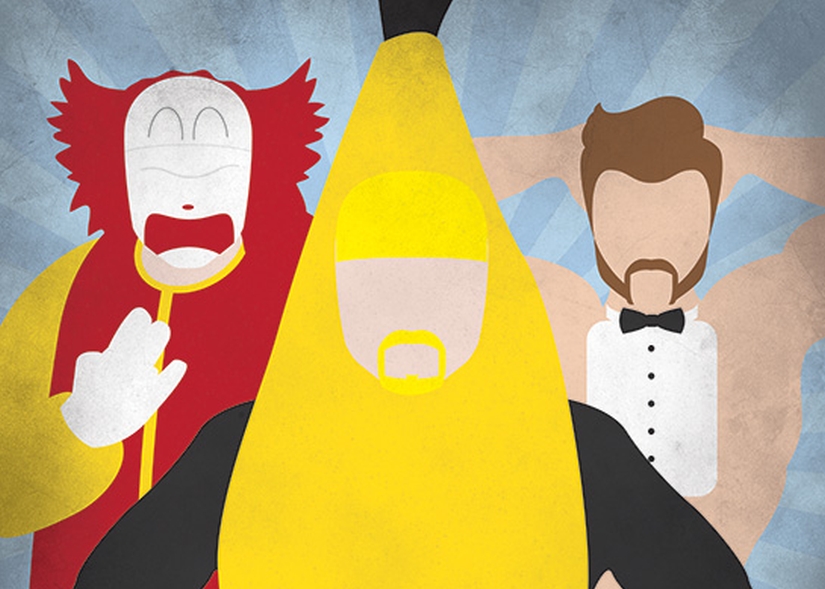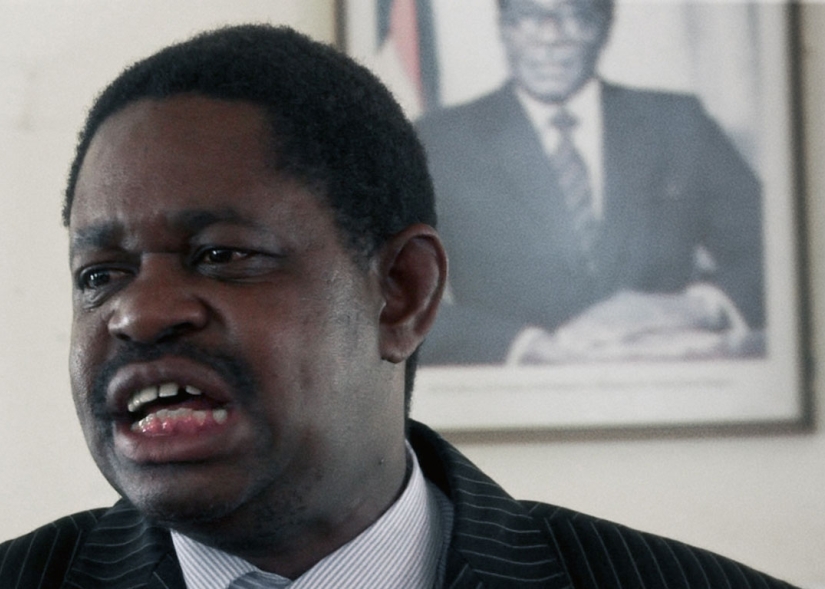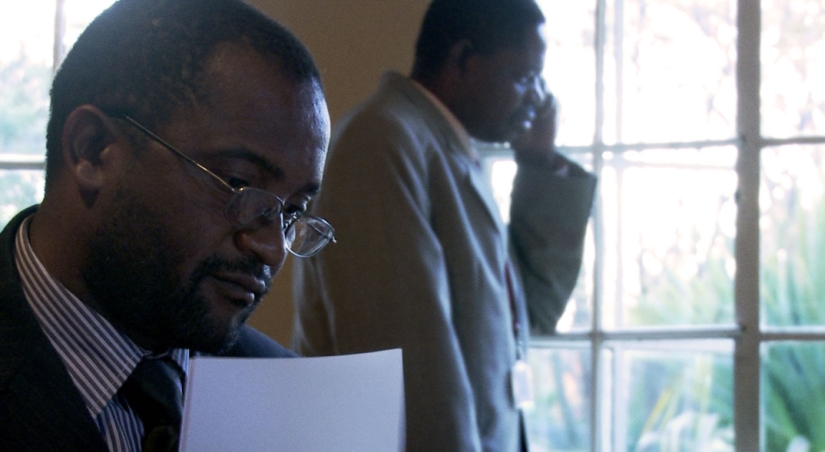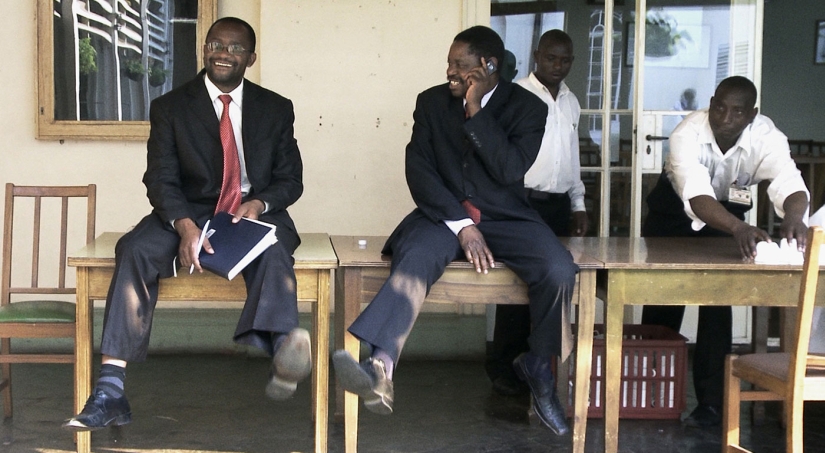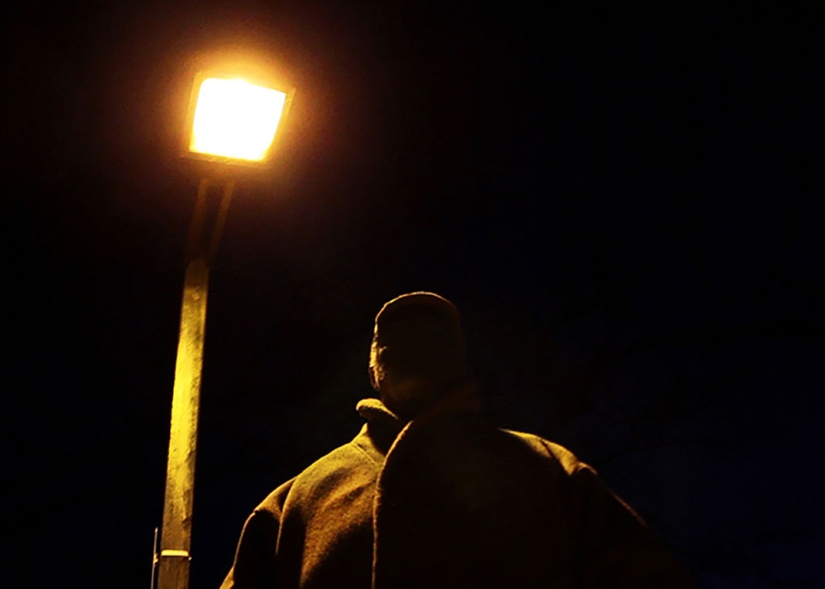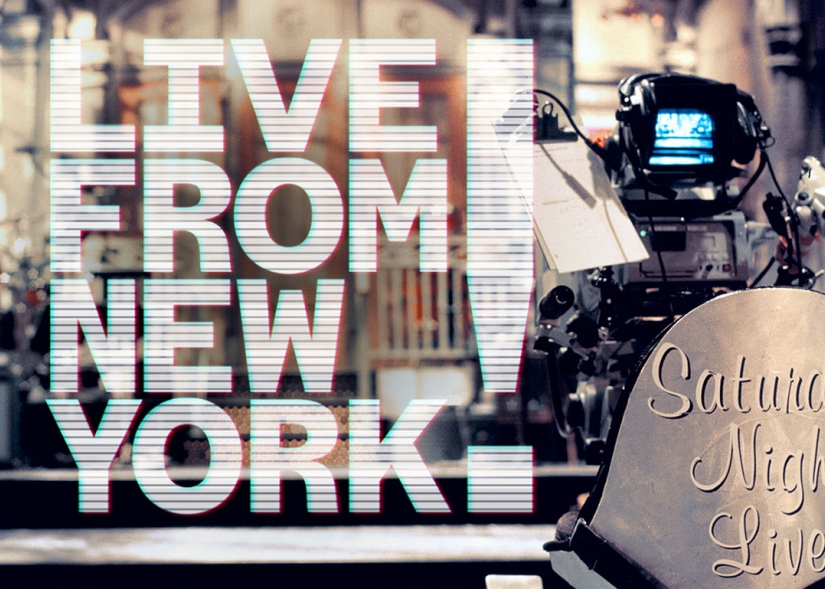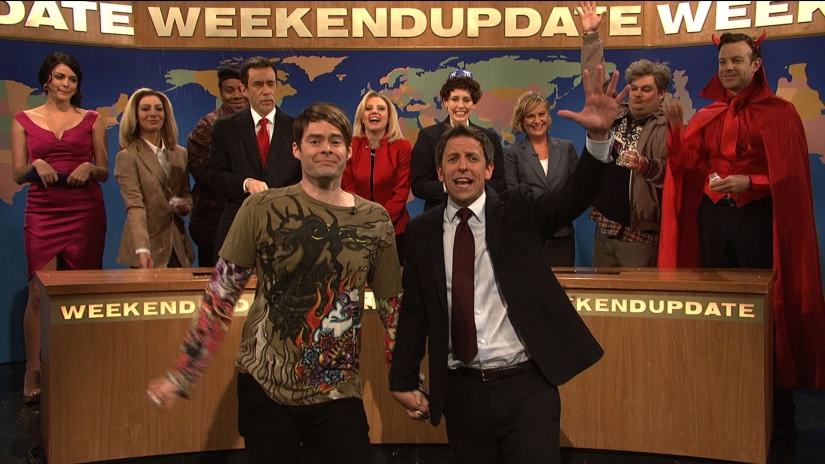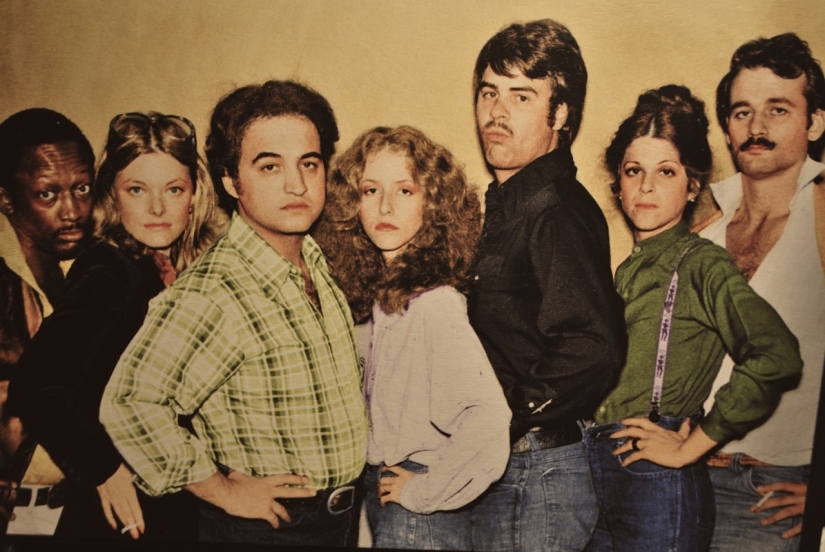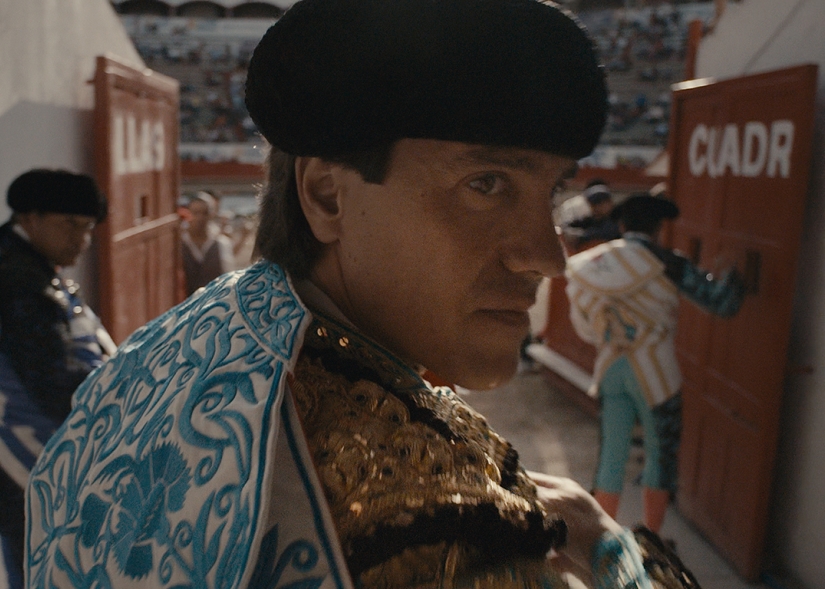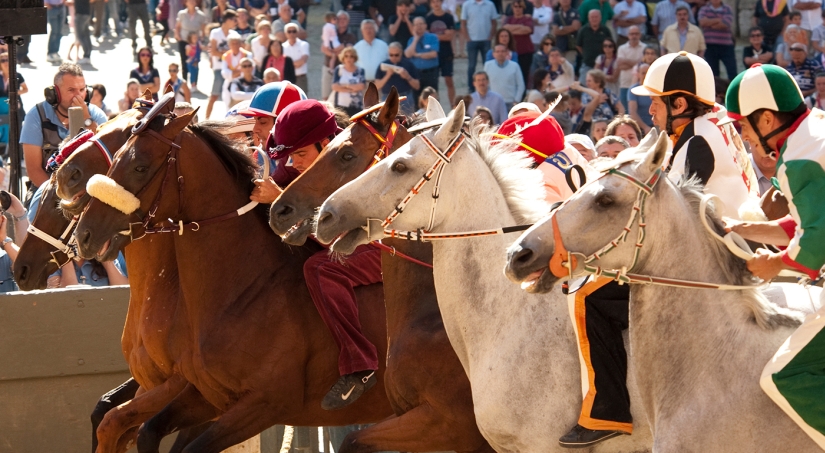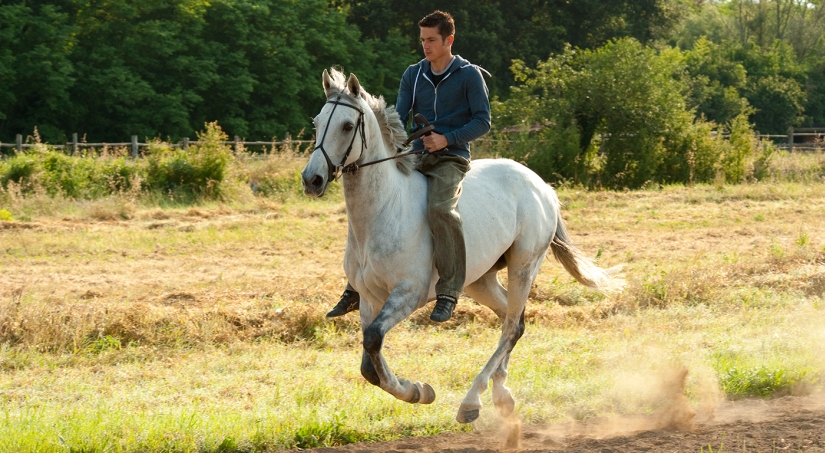Cartel Land Shows Why the War on Drugs May Be Unwinnable
Released last week, Matthew Heineman's documentary Cartel Land has been roundly lauded for its harrowing, on-the-ground chronicle of the Mexican drug war. Heineman trains his lens on two vigilante groups. One is the Arizona Border Recon (ABR), a small militia-like force that patrols the Arizona/Mexico border led by veteran Tim "Nailer" Foley. The other is a much larger Michoacan vigilante organization known as the Autodefensas, led in charismatic fashion by physician Jose Manuel Mireles. Both Foley and Mireles were driven to create their groups by a sense that their respective governments weren't doing enough to confront drug cartels head on. While Foley and Mireles never meet face-to-face in the film, Heineman joins then narratively to compare and contrast these two faces of vigilantism.
Danger is palpable throughout much of Cartel Land, a testament to Heineman's embedded approach and his commitment to it. The camera is there in the thick of shootouts and drug raids south of the border, and we're given ample access to the inner workings of the Autodefensas, both good and bad. Heineman also tags along with Foley in tense and often silent stakeouts to spot border crossers who are purportedly drug mules and/or drug smugglers. (The Arizona Border Recon was originally founded to stop illegal immigrants; the Southern Poverty Law Center considers the ABR an extremist group. Make of that what you will.)
In Manohla Dargis' mixed/negative review of Cartel Land at The New York Times, she said that for all of Heineman's bravery behind the camera, he needed to exercise more of directorial point of view about the war on drugs and vigilantism. Heineman has a point of view, though I think it's quietly articulated in his comparison of the ABR and the Autodefensas, and also the overall narrative trajectory of Cartel Land. The point of view, as it seems to me, is that vigilante groups are ill-suited to address the greater challenges posed by the war on drugs, and that the war of drugs may ultimately be unwinnable (unless you're a drug cartel).
[youtube id="6JD7hPM_yxg"]
As vigilantes, Mireles and Foley seem to embody different heroic ideals in order to propel and even legitimize their groups. Mireles is like some romantic revolutionary of old, coming from the common folk and armed with a compelling personal narrative, the proper face for a populist uprising. Watch him make a speech to a crowd besieged by drug violence, see him interact with fellow members of Autodefensas--there's the air of the charismatic leader, the sort of person who attracts followers through lofty rhetoric and force of will. Mireles' second-in-command is more like Santa Claus than Che Guevara, and he doesn't have nearly the same amount of respect or command of the group. Foley, by contrast, seems taken by the Wild West idea of the cowboy and the gunslinger, even citing old-time notions of vigilantism as a way of justice and making it a way of life. (The spirit of the open frontier may be something inherent in the ideologies of most militia or paramilitary groups.) In that regard, Foley and the ABR posse are the only law left when the fellas with tin stars can't get the job done themselves.
These vigilante and revolutionary ideas are potent fuel for a movement, but they can become complicated by the compromises required to put ideas into meaningful action. That makes up the meat of Cartel Land's second half. We first watch the Autodefensas make major strides against the Knights Templar drug cartel in individual raids, but the purity of the group begins to falter as it becomes bigger and better known. Mireles becomes a media figure for the movement, and as a consequence he and his family are placed in real danger by drug cartels looking to retaliate or to strike first before the Autodefensas get to them. Power grabs within the Autodefensas, malfeasance by its members, abuses of power, and increased interest by the Nieto government in co-opting the movement mean that the Autodefensas may be destined to fail regardless of those initial good intentions.
Foley's group, by contrast, always remains small in scale, and Foley himself never becomes the face of a movement for the media. The operation is small, manageable, and seemingly incorruptible in that regard, but its size means a limited impact on the drug war. The ABR don't seem to win battles in the war on drugs. They don't even necessarily win skirmishes, for that matter. It's unclear what lasting effect they have, if they're a stone thrown in a lake making ripples, or just hail dropping in a pond and vanishing.
If governments and large institutions are ineffective or ineffectual, and if vigilante groups are either hobbled by growth or limited in impact, what solutions are there to the drug war? Similarly, if there's a constant demand for drugs, and if cartels will fill their ranks with new members and new leaders when one of their own is incarcerated and killed in order to meet that demand, is the drug war even worth fighting in the current way it's being fought?
Heineman doesn't present any solutions, but that's not a mark against the things Cartel Land does so well, which is to say its embedded journalism. Documentaries aren't always meant to answer questions. If they can, that's great, but like good philosophers, the primary role of a documentary filmmaker may be to ask the right questions, or to reframe the questions we've been asking, or to reconsider the underlying reasons we ask the questions that we ask.
Eric Kohn points out something important in his Cartel Land review at IndieWire. The film opens with Heinemen watching masked men cook meth in the nighttime. The meth cook says he knows that the drugs will harm people when they're smuggled over the border. That admission seems to acknowledge that the cartel violence in Mexico claims innocent lives and he knows it's just part of the trade. Later in Cartel Land, we hear some of these stories. There's one about babies being murdered, and one about laborers killed at a lime farm because the landowner didn't pay a cartel protection money.
"But what are we going to do?" the meth cook asks. "We come from poverty."
Good question.
Watch a Young Amy Winehouse Sing Happy Birthday
After receiving rave reviews in May at the Cannes Film Festival, Amy remains one of the most highly anticipated films of 2015. Directed by Asif Kapadia, the film is featuring never-before-seen footage and interviews with her closest friends, ex-lovers, and collaborators, illuminating the Grammy winner’s early struggles with depression and bulimia en route to her surge as an artist.
However, Winehouse's father and former boyfriend have come out with much protest, issuing a statement claiming Amy “is both misleading and contains some basic untruths.” In response to this, the filmmakers have maintained cooperation of the Winehouse estate and confirmed to have "conducted in the region of 100 interviews with people that knew Amy Winehouse; friends, family, former partners and members of the music industry that worked with her." The film is said to be based off of these interviews.
Are there really "untruths" in the film, or was there more to Amy Winehouse than what her family and former boyfriend knew? Regardless, the controversy is adding both mystery and hype for the documentary's much anticipated release. For now, enjoy this special clip featuring the songstress singing "Happy Birthday" as a young 14-year-old. Amy will be in LA and NY theaters on July 3rd with a national release on July 10th.
[youtube id="39AibKDWbjE"]
[Tribeca] Bodyslam: Revenge of the Banana! Shows Why Some Wrestling Gimmicks Succeed and Others Fail
In the documentary Bodyslam: Revenge of the Banana, directors Ryan Harvie and John Paul Horstmann follow the bizarre story of Seattle Semi-Pro (SSP), an independent wrestling promotion whose existence is put in danger by an outsider who becomes part of their roster.
SSP is different from other indie wrestling promotions. There's no ring, for one, just a stage and some mats. Gone is the illusion of athletic competition. SSP is also a comedy wrestling promotion, but it's not a witty meta-wrestling cartoon like Chikara Pro. In Chikara, wrestlers will lob invisible hand grenades at one another, or sometimes wrestlers (and the crowd and the commentary team) will spontaneously perform in slow motion. At SSP, one of the headliners is a drunken clown named Ronald McFondle, and another is a guy in a banana costume who dances to The Buckwheat Boyz's "Peanut Butter Jelly Time," recreating a 13-year-old internet meme.
Even though SSP is not my taste in terms of wrestling, it's an irreverent family and there's nothing wrong people coming together and building that sort of kinship.
A lot of drama in Bodyslam: Revenge of the Banana hinges on the clash of personalities both inside and outside the ring (or, in this case, on and off the stage at a dive bar). What the film illustrates in an oblique way is why some wrestling characters succeed and fail, and what makes a good hero (babyface) and a good villain (heel).
[Tribeca Review] Democrats
Knowing that dictator Robert Mugabe is still the leader of Zimbabwe doesn't detract from the drama of Camilla Nielsson's documentary Democrats. The film covers the drafting of the country's new constitution, and while recent history is technically a spoiler, the intrigue comes from watching the struggle of ideologies embodied by two opposing individuals. Our primary subjects are Paul Mangwana, who represents Mugabe's ruling ZANU-PF party, and Douglas Mwonzora, who represents the reform-minded opposition MDC-T.
Democrats is about the political process and its headaches, and about a struggle taking place over the course of three years. Nielsson has remarkable access to her two primary subjects and captures many of the impasses and compromises over this stretch of time. She also chronicles various calculated (and corrupt) maneuvers made by ZANU-PF to suppress the opposition. Mangwana smiles as he discusses some of these power plays on camera. He senses, he knows, that the power of the people is often nothing when compared to the power of the state.
Democrats
Director: Camilla Nielsson
Rating: N/A
Release Date: TBD
Early in the film, we see the influence of Mugabe's cult of personality as well as his strong-arm tactics. The arms of the Mugabe government beat voters, they suppress voices, they intimidate opposition. Open constitutional meetings are held with average citizens voicing their political wishes. Those loyal to ZANU-PF pledge fealty to Mugabe and the status quo. Opposing voices feel pressured to remain quiet under threat of violence and imprisonment. ZANU-PF uses other methods of misdirection to squelch dissenting voices, and they don't try that hard to conceal them.
All the while, Mangwana laughs.
His party controls many of the instruments of accountability. No one else can hold them accountable without being threatened. This includes members of the press. Given all this, Mangwana's confident transparency is both refreshing as well as disheartening.
As the face of the political opposition, Mwonzora is high-minded and carries himself with grace and patience. All of these qualities are necessary given the power imbalance MDC-T faces. Like the best political idealists, he's driven by optimism and the belief that concerned people can make a difference. It just takes a lot of effort and time, and that's the problem. Who has the privilege of either given the state of the country? An underlying tension throughout Democrats is how much frustration and setback Mwonzora can take. It's hard not to see the cracks in the brave facade, and it's harder still to not admire this sort of resolve.
Even though stretches of Democrats are built around meetings and party discussions, Nielsson does an admirable job of making the various political maneuvers understandable and engaging. This is thanks in large part to the personalities of Mwonzora and Mangwana, who make excellent foils for one another. We're watching a series of moves made for the political long-game and short-game in Zimbabwe, and it'll be interesting to see what change, if any, eventually comes about.
At one point of Democrats, Mangwana laughs and smiles at the camera as he talks-up the power of the Mugabe government. They have the police, they have the courts, they have so many systems in place against dissenters. Mangwana asks what power words and a legal understanding can make given this disparity. We learn in Democrats what difference they make to the process, but outside the film, we'll have to wait for a definitive answer.
[Tribeca Review] (T)ERROR
In Lyric R. Cabral and David Felix Sutcliffe's documentary (T)ERROR, good counterterrorism intelligence seems to be a secondary worry for Shariff. He's 63 years old, he's an ex-con, he's been an FBI informant for decades, and, most importantly, he has bills to pay. That's always in the back of his mind—he does this because he needs the work, and he'll do whatever he has to in order to keep getting work. The gigs involve glad-handing his way into Muslim communities, getting to know a person of interest, and trying to get that POI to incriminate himself so the FBI can do the rest.
Nevermind the actual motives of the POI, in this case a Muslim convert named Khalifah Al-Akili. It's all about the arrest. This is an operation of entrapment, pure and simple, but the FBI gets what the FBI wants. Shariff has no choice but to comply. When the film is fully in motion, (T)ERROR reveals the malleability of personal desperation and how government abuses are permissible under the shield of counterterrorism.
(T)ERROR
Directors: Lyric R. Cabral and David Felix Sutcliffe
Rating: N/A
Release Date: 4/16/2015 (Tribeca)
It's not just desperation that drives Shariff. (T)ERROR looks back on the arrest and incarceration of Tarik Shah, a jazz musician that Shariff helped convict. When we learn more about Shah and what he said and the way that Shariff coaxed it out of him, we sense a fundamental sense of desperation driving Shah's words. Even hypothetical allegiance to Al Qaeda is allegiance enough for arrest. The system isn't just corrupt, it's also absurd and is committed to keeping the poor and the marginalized down. Shariff used to be a black militant before the FBI gave him a chance to become an informant, and the cycle continues: marginalized groups used to incriminate and incarcerate other marginalized people.
In some ways, Shariff's job is like high-pressure sales—he entices the desperate on the behalf of the FBI, trying to close the deal and get them to say something, anything, incriminating. If Shariff closes, there's a chance he'll get called on again by the FBI to close another deal and get paid. The camera hangs on Shariff, going in and out of focus in a stylized way, catching him around corners of a room like he's the subject of some sort of surveillance. After a while, his quiet frustration reveals years of guilt. Maybe the camera is his conscience watching, judging. Shariff seems to know what he's doing is awful, but sometimes, like Shah knew, a person has to do whatever it takes to pay the bills. Works for the man, gets paid by the man, but then has to pay the man back. And that cycle continues too.
There's a small stretch of (T)ERROR that feels like it treads water, and while the material as a whole is engaging and important to explore, there's a lack of forward movement near the middle. The Tribeca Film Festival cut of (T)ERROR clocked in at 84 minutes, which is about 10 minutes leaner than the original world premiere cut that played at Sundance. It'd be interesting to see if Cabral and Sutcliffe continue to carve just a few minutes from the front end of the movie as it plays more festivals or nears distribution of some kind.
That lag I mentioned doesn't last too long, however, thanks to an unexpected shift in Cabral and Sutcliffe's focus. They remain strong documentarians when the shift comes, but they become better documentary journalists. Not only do we understand Shariff, but Shah and Al-Akili too. It makes all the desperation more painful. (T)ERROR humanizes everyone involved in this deal. Except for the FBI, of course. They refused to be interviewed, possibly because they'd incriminate themselves further.
[Tribeca Review] Live From New York!
It's not easy to render 40 years of history into a feature-length documentary. To do that, it's often important to provide an underlying path through history, one that can guide the viewer and the material in a purposeful way. With a path established, it's possible to diverge and return so that even the tangents along this path don't seem quite so tangential.
Bao Nguyen attempts to bring four decades of Saturday Night Live to life with Live from New York!, but the results are unfocused, sort of like the last half hour of sketches in most SNL episodes. A cohesive narrative throughline never emerges, so the history of the show is a shapeless mass of talking heads and best-of clips. We don't really arrive anywhere at the end because the film doesn't know where it's going.
Live From New York!
Director: Bao Nguyen
Rating: N/A
Release Date: April 15, 2015 (Tribeca)
This isn't like Saturday Night by Doug Hill and Jeff Weingrad, or Tom Shales' oral history Live From New York. The documentary is more like a DVD extra for the interminable Saturday Night Live 40th Anniversary Special. Whenever an interesting topic is raised that might guide the film—SNL's diversity problems, the show's place in the lineage of sketch comedy and late-night programming—it's summarily dropped to move on to something else. The film even buttresses its moments of critical self-reflection with a sense of intrinsic self-importance, that the institution of Saturday Night Live turning 40 is sufficient to warrant a film to celebrate the occasion.
Interviewees claim that everyone tunes in to Saturday Night Live to see what they'll say about a given cultural moment. I'm not sure SNL is the nation's most esteemed pulse-taker anymore. The Daily Show probably inherited that mantle in the last decade, and ditto its progeny, The Colbert Report and Last Week Tonight with John Oliver. These shows and their creative teams have become the nation's conscience as well as its reflecting pool and funhouse mirror. Stewart's voice appears in the intro to Live from New York!, yet he never appears on camera to discuss the new keepers of the late night flame. Colbert had auditioned for SNL at one time, but he's not present in the documentary either.
There's a slew of other gaps that the SNL documentary doesn't delve into. For instance, there's no mention of SNL's live improv roots via Second City, the Groundlings, the Upright Citizens Brigade, etc. Sinead O'Connor rips up a picture of Pope John Paul II, but where's Elvis Costello's "Radio, Radio" transgression that got him banned for 12 years, or the mayhem that caused $20,000 of damage when Fear was the musical guest? There's also a hodgepodge of interviewees, which probably came down to a question of availability. There's no Bill Murray interview or even Dan Akroyd, but Bill O'Reilly is in there for some reason.
I wonder if SNL in its current state remains on the air simply because it's been on television so long. It's a question a lot of others have probably wondered, and it would be fascinating to consider if longevity is its own kind of life support.
Just don't expect to find answers to that in Live from New York!
[Tribeca] GORED's Reckless Bravery Offers Lessons for Creatives
Ido Mizhary's GORED provokes an innate morbidity. We're told that Antonio Barrera is not the most graceful of bullfighters. He's been gored a staggering 23 times. The documentary is framed by Barrera's final bullfight before retirement. Given all the cliches about death during a last job, it's unclear if he'll make it out unscathed.
We're also told that bullfighting at its best is like a dance. (If you can get past the animal cruelty and view this practice anthropologically, it makes sense on a metaphorical level.) Archival footage of famous Spanish matadors show off the grace that crowds expect. Slow movements, pure anticipation, no perspiration, and the illusion that the bull is a willing accomplice in its own demise. The struggle between man and nature is presented as a hypermasculine tango.
If you don't have grace as a bullfighter, you can at least be recklessly brave, which is what makes Barrera popular in Mexico. (Is this the bullfighter's version of being big in Japan?) There are lessons in Barrera's approach that go beyond bullfighting, and it applies to various artistic endeavors. Maybe there's a certain method that joins physical exertion and creative endeavors, or a common disposition that athletes and creatives sometimes share. Or maybe it's just the way that people define themselves and their philosophy of life by the work they do and the things they create, and the exterior form is a way of understanding the interior life.
[Tribeca Review] Palio
The Palio is a horse race that's been held in the Italian city of Siena since 1656. Twice each year in the summer, the 14 districts of the city pick horses and hire jockeys to represent them. The riders dash around the square for 90 mad seconds while the crowds watching from the ground and the windows cheer them on. Some horses skid into walls during a sloped right-angle turn, others slip and tumble and bring bodies down with them in a pile. Only first place matters.
And the race is just part of the intrigue.
Palio is a documentary shot and edited with the verve of a narrative thriller. It's exhilarating, it's exhausting; spiked everywhere with ancient history, colorful local yarns, and the myths of conquering heroes. Director Cosima Spender has crafted a sports movie by way of Spaghetti westerns, and yet it's so much more. There are multiple surprises nested in this Sienese tradition, and there's rarely if ever a lull in the action.
Palio
Director: Cosima Spender
Rating: N/A
Release Date: April 18, 2015 (Tribeca)
The primary focus of Palio isn't the personality of the districts but rather the men who ride the races. The jockeys have no allegiance to anyone but themselves, we're told. Many are out-of-towners. They're mercenaries working for the highest bidder, and they're hired to ride a horse that's picked in a draft process rather than a horse they might have worked with in the off-season. There's a love/hate relationship between the jockeys and the people. When a jockey wins a race, they are glorified. When a jockey loses, crowds get crazy. Spender shares archival footage of a losing Palio jockey pulled to the ground, dragged, and absolutely brutalized by rabid spectators.
Jockey Andrea Degortes, nicknamed Aceto, won 14 Palios from 1965 to 1992. He's a larger-than-life figure, all machismo and swagger for the brief moments of screentime he has. Yet despite victories, he recounts on camera a single loss that caused him to go into hiding. He legitimately feared for his life.
There's a tale of generations in Palio. Gigi Bruschelli is one of the more dominant jockeys in action. He's won 12 Palios and wants to tie and unseat Aceto's record while he's still able. (Though if you ask Aceto, Bruschelli's only won 11.) There's also a younger jockey, Giovanni Atzeni, whose promise seems limitless. The older jockeys and fans swap stories, and they still have the same arguments they had in the past. Each subject we spend time with is involving in their own way.
There's also a tale of backroom drama in Palio, and it's presented with a sense of conspiracy. Spender catches implications of bribes and other shady dealings for strategic advantage. District rivalries are played against each other, last-second deals might be cut at the crucial point before a race starts. When asked about some of his more questionable methods, Bruschelli smiles like a good mercenary to deflect and conceal.
Palio is constructed so viewers can experience the strange beauty of ritual. While we don't get the full scope of the pageantry, we hear the district names called out—unicorn, giraffe, she-wolf, tower, wave, seashell. The districts wear their colors and sing their songs. The hooves rumble and thunder thanks to the expert sound design. We watch jockeys hoisted in the air as a swell of an Ennio Morricone score elevates the rider to the state of gunslinger, warrior, gladiator. We even catch a glimpse of a special contraption that picks the starting line order at random. Spender presents the object with equal parts majesty and mystery so that the inner mechanisms at play retain their potential for magic.
These rules and these images are like something out of an Italo Calvino story, so charming, so fascinating, such a feast of ideas. And like a Calvino story, I can't wait to revisit Palio for its craft and the excitement it inspires.
For more information on Palio and to find out about screenings/tickets for the Tribeca Film Festival, click here.

